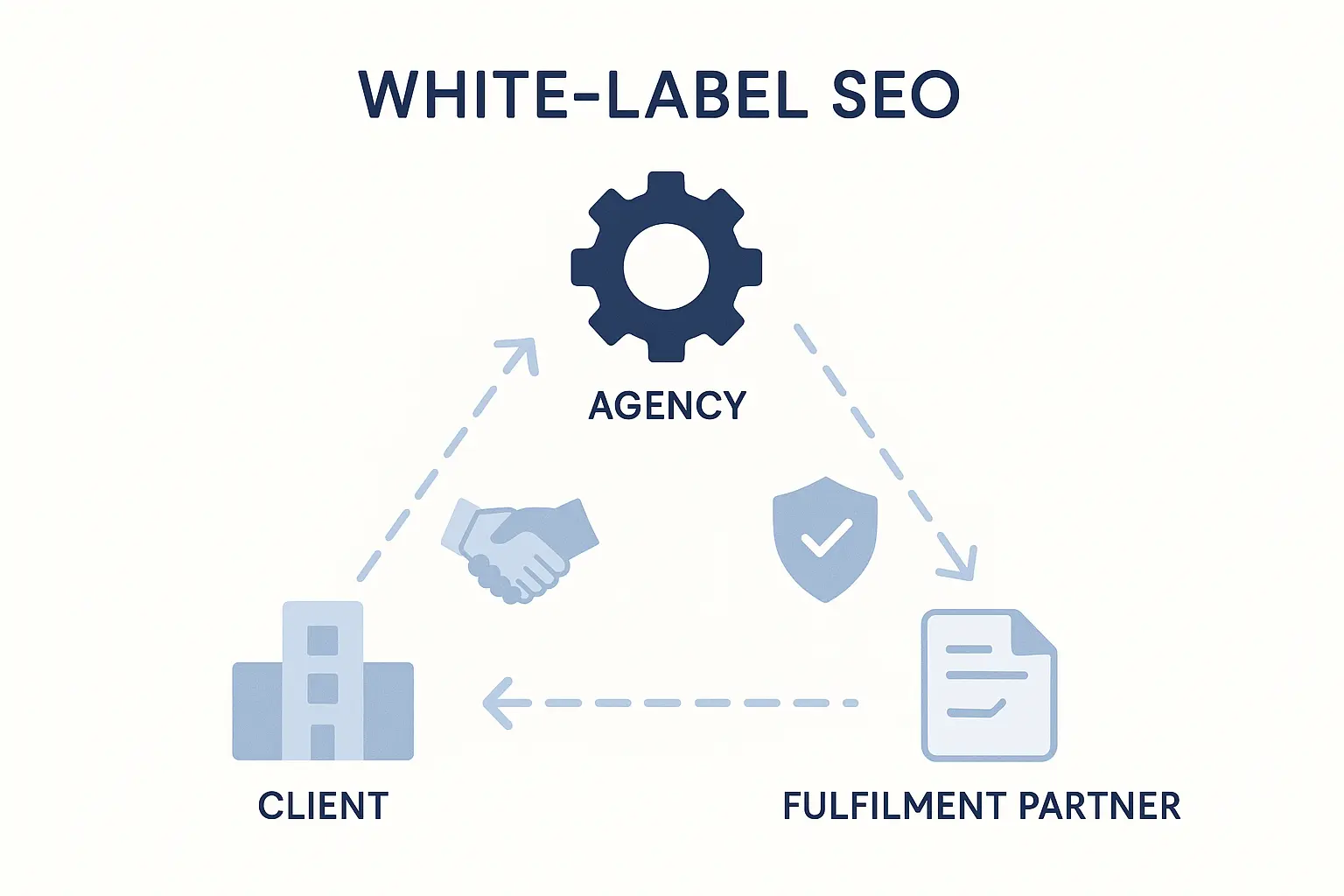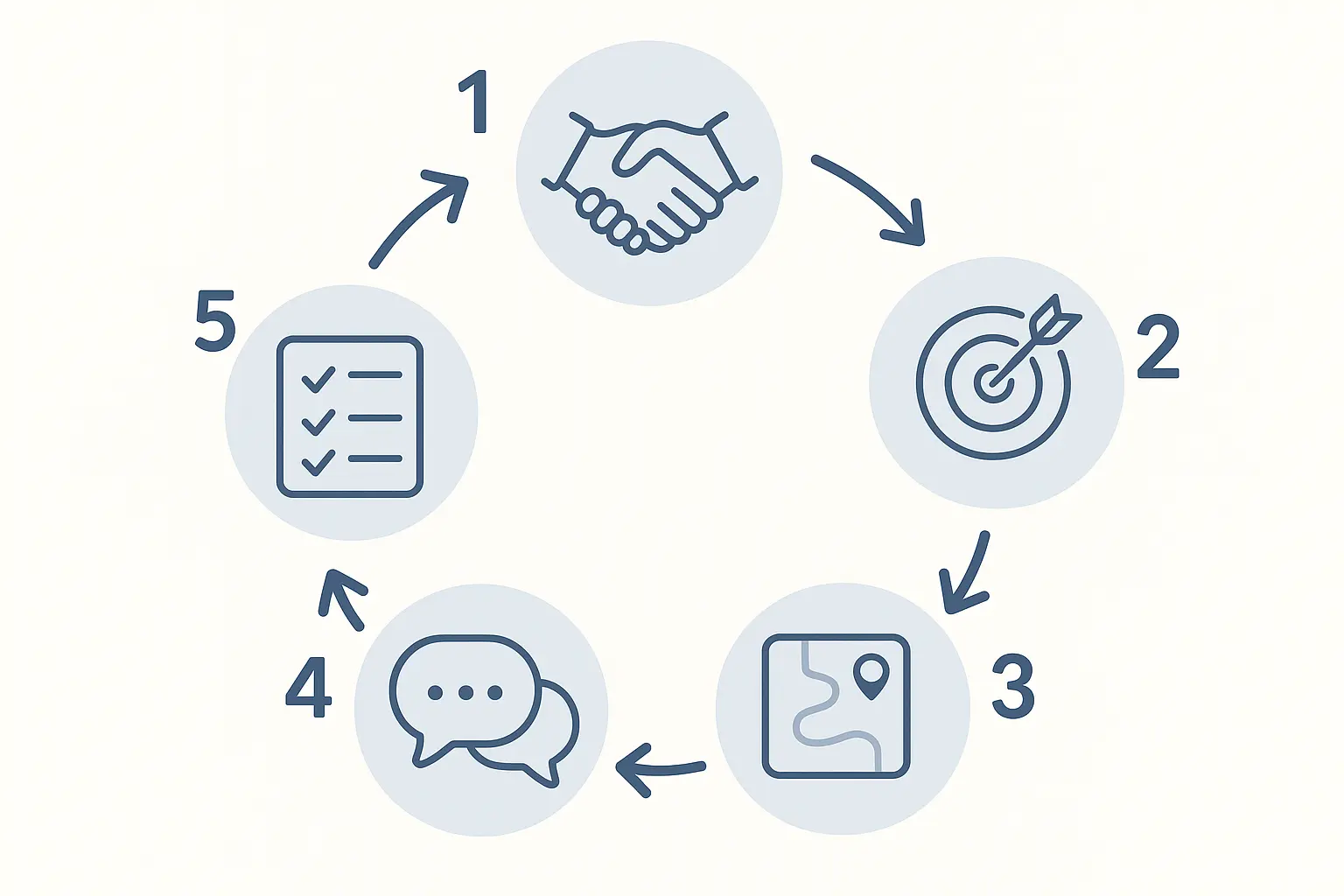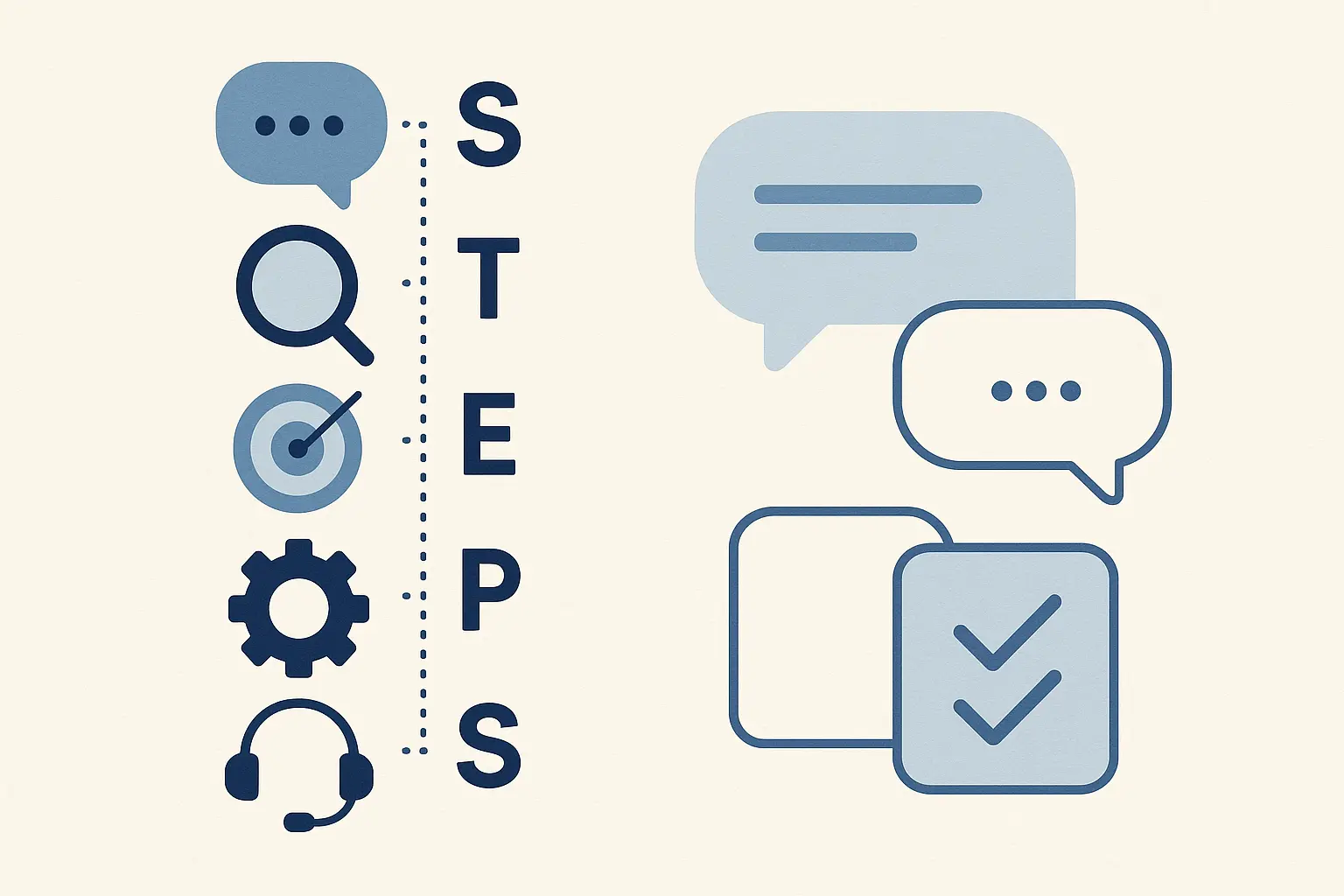The call ends, and you feel that familiar knot in your stomach. The client seemed happy, but the conversation was… vague. They want to “rank higher” and “get more traffic,” but you’re left without a clear definition of success, a firm grasp of their business goals, or a concrete plan for the next 90 days.
Now, imagine the opposite. You hang up feeling energized. The client is excited, you have a crystal-clear understanding of their priorities, and they know exactly what to expect. You haven’t just gathered information; you’ve established yourself as their strategic guide.
That’s the power of a masterful kick-off call.
In a white-label SEO relationship, this first meeting isn’t just a formality—it’s the single most important conversation you’ll have, setting the tone for the entire engagement. And with research showing that 75% of B2B buyers choose the vendor who adds value at each stage, your kick-off call is the first and best opportunity to prove you’re that strategic partner.
This is where you transform from a service provider into an indispensable part of their growth engine. Let’s break down how to do it.
Why This Call is Your Most Important Meeting
When you’re using a white-label partner, you are the face of the operation. You own the client relationship, the strategy, and the results. While this is a huge advantage, it also means the responsibility for communication rests squarely on your shoulders. Poor communication is a leading cause of client churn, and this call is your chance to build a foundation of trust from day one.
A successful kick-off call achieves three critical objectives:
- Align SEO with Business Goals: Move the conversation from “keywords” to “revenue.”
- Establish a Transparent Process: Eliminate uncertainty by showing the client what will happen and when.
- Define Success Together: Create shared, measurable goals that prevent misunderstandings down the line.
Agencies that demonstrate a clear, strategic process from the very first interaction are far more likely to retain clients long-term. This agenda ensures you do exactly that.
The Pre-Call Huddle: Aligning with Your White-Label Partner
Before you even think about dialing the client, you need to huddle with your execution team—your invisible SEO department. This internal sync is non-negotiable.
Your 15-minute huddle should cover:
- Scope Confirmation: Double-check the signed SOW. Are you aligned on all deliverables?
- Role Clarification: Who is the client’s single point of contact? (Hint: It’s you.) How will you relay technical client questions to your partner for a swift, clear response?
- Initial Findings: Has your partner run a preliminary site crawl or competitor analysis? Discuss any interesting insights you can bring to the call to demonstrate immediate value.
This step ensures you walk into the client meeting with the confidence of a fully-equipped, in-house team.
The Ultimate Kick-Off Call Agenda: A 7-Step Framework
Think of this agenda as your roadmap. It keeps the conversation focused, productive, and positions you as the expert leading the way.
Step 1: Introductions and Setting the Stage (5 mins)
Start with confidence. Introduce your team members on the call and clearly state your role as the lead strategist and primary point of contact.
Sample Script:“Welcome, everyone. The goal of our call today is to dive deep into your business objectives, define what a successful SEO partnership looks like for you, and outline our strategic process for the first 90 days. We want to leave this meeting with a shared vision and a clear path forward.”
Step 2: The Discovery Deep-Dive (15 mins)
This is where you move beyond surface-level SEO questions. Your goal is to understand the business, not just the website. This is crucial, because SEO delivers its true value only when it aligns perfectly with broader business goals.
Ask questions like:
- “Beyond revenue, what is the most important business objective for the next 12 months?”
- “Which of your services or products has the highest profit margin?”
- “Describe your ideal customer. What problems are they trying to solve?”
- “What does your sales cycle look like? How are leads currently generated and tracked?”
- “Who are your top three competitors, and what do you feel they do better than you online?”
Step 3: Defining Success: From Rankings to Revenue (10 mins)
Here’s your chance to manage expectations and shift the focus to metrics that matter. Proving ROI is a common challenge—over 61% of marketers say it’s their biggest one. You solve this by defining it with the client upfront.
Explain the difference between:
- Leading Indicators (The ‘How’): Organic traffic, keyword rankings, and backlink acquisition. These show the campaign is healthy and moving in the right direction.
- Lagging Indicators (The ‘Why’): Leads, form submissions, qualified calls, and, ultimately, revenue. These are the business results we’re driving toward.
Sample Script:“We track keyword rankings closely, but we see them as a means to an end. Our primary goal is to drive meaningful business outcomes. So, let’s define our Key Performance Indicators (KPIs). Would a 20% increase in qualified demo requests from organic search be a significant win in six months?”
Step 4: Walking Through the Process and Timeline (10 mins)
Pull back the curtain on your process. This transparency builds immense trust. Outline what the client can expect in the first 30, 60, and 90 days.
- Month 1 (Foundation): Technical site audit, Google Analytics and Search Console setup, in-depth keyword research, and competitor analysis.
- Month 2 (Implementation and Content): On-page optimization, core content creation, and local SEO foundation (if applicable).
- Month 3 (Authority and Momentum): Strategic link building, content promotion, and initial performance review.
This is also the perfect moment to underscore the breadth of your capabilities. You might say something like, “Our process covers everything from deep technical fixes to strategic content planning, ensuring a comprehensive approach. These are core tenets of our white-label SEO services.”

Step 5: Establishing the Reporting Cadence (5 mins)
Establish clear expectations for communication and reporting. Ambiguity here is a recipe for client anxiety.
Sample Script:“You’ll hear from us regularly, but our formal reporting process is simple. On the first business day of each month, you’ll receive a detailed performance report. It will break down our KPIs, the work we completed, our key findings, and our priorities for the upcoming month. We’ll also schedule a 30-minute call to review it together.”
Working with a skilled agency SEO partner makes this seamless, as they provide the white-labeled reports for you to deliver.
Step 6: Clarifying Roles and Communication Channels (5 mins)
Define the rules of engagement to protect your time and maintain an orderly workflow.
- Point of Contact: Reiterate that you are their single point of contact.
- Preferred Channel: Is it email? A project management tool like Asana or Slack?
- Response Time: Set a reasonable expectation for responses (e.g., “We respond to all emails within 24 business hours.”).
Step 7: Next Steps and Q&A (5 mins)
End the call by reinforcing momentum and clarifying immediate actions.
Sample Script:“Thank you for your time today. As for next steps, we will send a recap of this call by the end of the day. We’ll also need you to grant us access to your Google Analytics and Search Console. Our team will then begin the technical audit, and you can expect our first official update on [Date]. What questions do you have for us?”

Post-Call Checklist: Solidifying the Foundation
The work isn’t done when you hang up.
- Send a Recap Email: Within hours, send a summary of the discussion, including defined KPIs, action items, and next steps.
- Onboard Internally: Immediately share client access and call notes with your white-label partner.
- Set Up Tooling: Add the client to your project management and reporting software.
- Schedule the First Report Meeting: Get the next touchpoint on the calendar now.
Frequently Asked Questions (FAQ)
Q1: Should my white-label partner be on the client call?
Typically, no. The essence of “white-label” is that your partner is invisible. You are the expert fronting the relationship. Your partner’s role is to empower you with the data and insights you need to lead the conversation confidently.
Q2: What if the client asks a technical question I can’t answer?
Never guess. It’s better to be honest and thorough. Say, “That’s an excellent, specific question. I want to get you a precise answer. Let me consult with our technical team and I’ll include a detailed explanation in my follow-up email.” This approach positions you as diligent, not uninformed.
Q3: What’s the one thing that makes or breaks this call?
Clarity. A client must leave the call with zero ambiguity about the goals, the process, and the timeline. When expectations are aligned from the start, you create a partnership built on trust, which is essential for any successful SEO outsourcing for agencies model.

From Kick-Off Call to Long-Term Partnership
A structured, strategic kick-off call does more than just start a project—it builds the foundation for a long-term, profitable client relationship. It proves your value beyond execution and establishes your agency as a true strategic guide.
By mastering this first conversation, you set the stage for your white-label partner to deliver incredible results in the background, making you the hero who drives measurable growth for your client.

